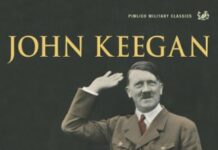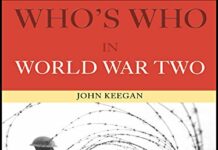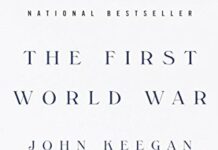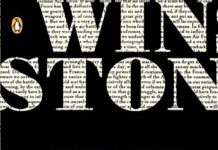
Ebook Info
- Published: 2012
- Number of pages: 474 pages
- Format: PDF
- File Size: 7.69 MB
- Authors: John Keegan
Description
The acclaimed author and preeminent military historian John Keegan examines centuries of human conflict. From primitive man in the bronze age to the end of the cold war in the twentieth century, Keegan shows how armed conflict has been a primary preoccupation throughout the history of civilization and how deeply rooted its practice has become in our cultures. “Keegan is at once the most readable and the most original of living military historians . . . A History of Warfare is perhaps the most remarkable study of warfare that has yet been written.”–The New York Times Book Review.
User’s Reviews
Reviews from Amazon users which were colected at the time this book was published on the website:
⭐”A History of Warfare” could easily be considered Keegan’s best if it weren’t for the comparable excellence of “The Face of Battle” and “The Mask of Command”. Fluidly-written and compelling, Keegan manages to pack an uncanny amount of interest into every sentence. This is as close to being a page-turner that any history can hope for, and yet it also exhibits the erudition, information density and completeness that one demands from a professional historian.As might be expected, Keegan begins with prehistoric primitive warfare and concludes with nuclear arms. It seems at first blush a task impossibly broad in scope but the author manages to achieve superb pacing and balance. Between these two endpoints Keegan addresses the rationale for warfare as well as technology, tactics and strategy. It is enough to let the chapters speak for the structure, which divides into “War in Human History”, “Stone”, “Flesh”, “Iron”, and “Fire”. Between each chapter is an “interlude” focusing respectively on limitations on warmaking, fortification, armies, and logistics and supply. While the organization of the history is logical, it should be noted that chapters are more-or-less chronological while the interludes are less so.The work does have some problems — the most significant is that Keegan intends it as a polemic against Clausewitz. The author attempts to refute Clausewitz’s dictum that “war is a continuation of policy by other means.” The entire narrative is localized and situated around this polemic and the unfortunate result is a mild but periodically grating commentary which is both unnecessary and unconvincing.On the one hand, if, as Keegan asserts, Clausewitz assumed the existence of “states, and state interests” then the reader would not expect his famous dictum to apply to pre-state societies and the polemic would thus be gratuitous. On the other hand, if one believes it is vital to show that war is not a continuation of policy for pre-state societies, then other problems surface.The principal approach the polemic takes, then, is to show that not all warfare is motivated by policy. But if a war lacks a policy behind it then it must be waged for the sake of sheer bloodlust. In a modern society one can only look at the anomalous serial killer for demented pleasure in death, so it is hard to imagine it reproduced on a collective scale. For this reason it seems simplistic that a society would conduct a war for some carnal “joy of bloodletting”. Perhaps then, a non-policy motivation would be vengeance. But is revenge not in some sense a policy, stated or unstated? Can one not argue that a code of vengeance exists to guarantee the expectation of response and so in effect deter aggression? Is it even accurate to assert that prehistoric cultures had no “policy” behind their conflicts? And what of modern societies — is it correct to conclude that since (e.g.) the Cold War remained “cold” out of “fear” of Mutually Assured Destruction (MAD), the Cold War was not an extension of policy but merely the result of “fear”?Moreover, even if Keegan’s objection is valid in some pedantic sense — where does it get us? Every war has different specific motivations, some highly complex, others instinctive and basic. Beyond its appeal to professional historians, is it at all important to lay-audiences to classify each war as policy-motivated or not? Judging by the conclusion, it seems Keegan’s goal is to show that mankind is a teeming mass of violent degenerates, which, if not reformed soon, will inevitably ruin the planet with nuclear weapons. Whether such an admonition is novel, helpful or in any way illuminating is another matter.Clausewitz himself was in the process of revamping his views when he died, his last texts both a synthesis and correction of preceding ones. The reader might turn to Corbett’s “Principles of Maritime Strategy” to get an alternative perspective on Clausewitz — the Prussian’s belief in peace through a premature intimation of MAD. And what really is the fascination with Clausewitz when his elevation of regiments to a structural requirement of social order was, in many respects, a legacy of the French Republic — and was his “regimentalism” much worse than existing alternatives?On the whole, then, Keegan’s history would be phenomenal without lowering itself, as it were, by engaging yesterday’s policy wonk in mortal combat. At the same time it bears repeating that the history itself is, indeed, phenomenal.
⭐If I had to recommend one John Keegan book to a history fan without knowing anything else about his taste, this is the one I would pick. Why? It’s all his best stories and facts from an entire career of research that didn’t fit the narrative structure of any of his other books.I heard Mr. Keegan discuss this book in an interview once and he said two things that stuck with me that are relevant to share with you.1. I’ve read a lot about military history in a long career of research for writing my other books. This book is full of all the interesting things I know about military history that didn’t get used in another book. (Translation: it’s full of GREAT material!)2. Every book I’ve ever written had a structure to it. So I overdid it here with my thesis about Clausewitz. I thought I needed a thesis for the book and I realize now that I should have been comfortable with a less structured book instead of trying to force fit a structure onto it.When you read reviews that knock him for all the Clausewitz in this book don’t be too concerned. It’s easy to ignore any sentence containing that word now that you know.
⭐This book tries to cover a lot of territory from ancient tribal warfare to the nuclear bomb and post colonial rebellions. The book looks at social and technological aspects of warfare. Its long chapters with titles such as Stone, Flesh, Iron, and Fire loosely center around those topics. It is nearly impossible to separate them from one another.The big takeaway from the book for me is how limited war really is. We put social limits on war such as not allowing women and children to participate. (Yes, there are exceptions.) There are technological limits such as how accurate a firearm can be. And there are logistical limits based on how can an army keep its fighters supplied with food, water, and munitions.Of particular interest to me were the social and logistical limits. In primitive societies, it seems war is very ritualized and limited as to when, where, and how it is fought. Thus large scale death is avoided. Logistical limits seemed to limit the size of any fast growing, large scale empire such as the Huns or Alexander the Greats movement. It was also interesting to see how these limits can be somewhat thwarted, at least for a time, by the willingness of combatants to fight such as the Confederacy holding out against the United States in the American Civil War.The only problem I had with the book was largely my own expectations. I would expect it go to go one way, and it would go another. Therefore, I was struggling with the text. I normally embrace this kind of challenge to my thinking, but for some reason, it just irritated me. I think I felt as if I was missing some important information. This book could have easily been twice the length and still not have been comprehensive enough for me. Maybe that was the real challenge I had with the book.If you are interested in learning more about war, I would recommend this book.
⭐If the reader is looking for a more or less chronological analysis of the technical, tactical and strategical developments in the field of warfare through human history, he will be disappointed with this book. A more truthful title would be ANTHROPOLOGY OF ARMED CONFLICT, being a highly speculative interpretation of second-hand received historical facts. If the questions that Keegan asks himself -how right was Clausewitz defining war as a continuation of politics… how Clausewitzean is this or that specific conflict… how purely European is the phalanx-style of battling… what is the source of human aggressivness…- appeal the interest of the reader, he won’t feel that the reading of the book is a waste of time. Otherwise, he won’t find it enriching at all.
⭐This (in my opinion) is more a dissertation to provoke debate and discussion than an standard military history book. It discusses military history throughout the ages from a Clausewitzian viewpoint and the way war is prosecuted by different cultures at various points in history. Its an interesting and thought provoking book, its conclusions are interesting and I would say for anyone reading History in general at a university level this book is a must read. The insight and analysis of why and how various cultures fight shows why warfare has always been (and still is) a hugely important driver of society, possibly more influential than anything else on all our lives. I think that although all the theories in this book have been aired before by the author and others this pulls it all together and delivers a very useful and informative read ….. and some questions for further research.
⭐Extremely literate, well-constructed consideration of the history of warfare, which advances the argument that contrary to von Clausewitz’s mis-quote, “War is the continuation of policy by other means”, that war is actually culturally determined, often irrational, and the subsuming of it as an almost legal means of the advancement of global policy is not only undesirable but potentially terrifying.Also fascinating were the insights into Oriental idioms of warfare, the role of technology in battle, and the consideration of the anthropology of war amongst so-called “primitive” peoples. Keegan speaks about “primitive” war without really examining the ideology behind calling the peoples involved “primitive”, which is probably my single quibble.In all respects, however, the scholarship has the vast breadth that a history of world warfare requires and the style is readable while being eminently authoritative.I think any thoughtful person would find this book interesting.
⭐The first few dozens of pages are all about what was Klausewitz wrong about, which was a littlo too tedious for me. Don’t be put off, though: after a slow start it gets just simply fascinating, presenting you the big picture and lots of tiny interesting details at the same time. A must-read for anyone interested in history, either professionally or as a hobby.
⭐Bought as a gift for my brother, he absolutely loved it – and he’s read a few to compare it to, lol.Well written and put together book for military minds.
Keywords
Free Download A History of Warfare in PDF format
A History of Warfare PDF Free Download
Download A History of Warfare 2012 PDF Free
A History of Warfare 2012 PDF Free Download
Download A History of Warfare PDF
Free Download Ebook A History of Warfare




